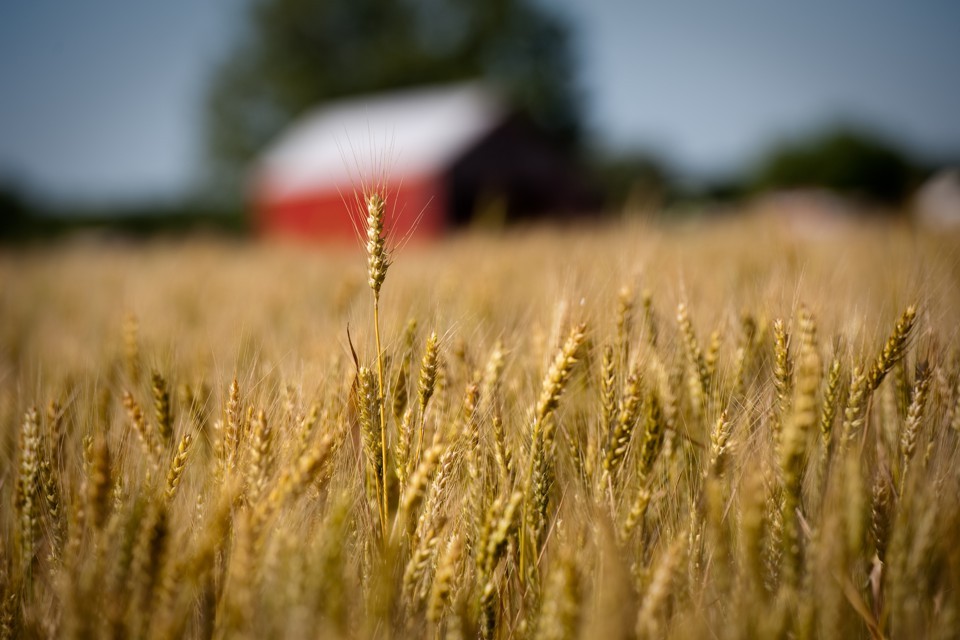PBS: Escaping Eritrea … [Read More...] about ካብ ውሽጢ ቤት ማእሰርታት ኤርትራ
The Wheat Disease Threatening Asia’s Food Supply
Farmers are struggling to control a deadly fungus that jumped two oceans and now has U.S. scientists on guard.

Alone in a field of deep green, the bleached yellow head of a single winter wheat plant jarred the experienced eye of an agronomist walking through a test plot in Princeton, Kentucky in May 2011.
DNA testing at the University of Kentucky confirmed the bad news: The plant had wheat blast, a disease that can drastically reduce a farmer’s yield, and for which little natural resistance is known. Magnaporthe oryzae, the fungus that causes it, had never been seen on wheat in the United States outside of a Biosafety Level 3 lab.
Genomic analyses of Magnaporthe samples from Bangladesh found that they were clones of one another, indicating a common source, and were virtually indistinguishable from certain South American strains, according to Barbara Valent, a professor of plant pathology at Kansas State University and a leader of a team of researchers from the United States, Bangladesh, and the International Maize and Wheat Improvement Center in Mexico. (Molecular analysis by an independent group of researchers based in Europe, OpenWheatBlast, came to the same conclusion.) Officially, the question of how blast arrived in Bangladesh remains unresolved, but some outside observers believe that grain imported for food was partly diverted for planting.
A plant’s best defense against disease lies in its genome, Valent noted. About 100 major resistance genes for rice blast are known, but very few have been identified for wheat blast. That has become a major goal for an international group of scientists—field pathologists, epidemiologists, and molecular and genomic experts—who have been working together since 2009 to understand wheat blast and keep it out of other wheat-producing regions, including North America. Now called the Blast Integrated Project, the effort is funded by the USDA and led by Valent, with collaborators across the United States, South America, Europe, and now Bangladesh.
As an epidemic requires a toxic combination of pathogen, host, and environment, Valent envisions controlling wheat blast with an integrated approach that goes beyond building resistance. Agricultural practices, like planting alternative crops for a time, can help. Farmers can plant a little earlier or later in the season to avoid the combinations of heat and moisture that favor blast development, but there are limits to that adjustment. Treating seeds with fungicides ahead of planting has shown some promise, although the most effective treatment is not licensed in the United States. Spraying fungicides on crops in the field seems to help, but their effectiveness has been incomplete. In addition, small farmers in countries like Bangladesh may find it hard to afford those alternatives.
* * *
Could wheat blast appear in the United States as it did in Bangladesh, in a load of foreign grain or in a more catastrophic repeat of the Kentucky incident?
The USDA’s Animal and Plant Health Inspection Service regulates the import of seeds of wheat and related species into the United States to keep out weeds and some wheat diseases, but not yet blast, although a possible pathway for Magnaporthe has already arisen. In 2010, American livestock farmers imported 268,000 tons of Brazilian wheat for feed, but there’s no evidence that the grain carried the fungus.
The threat of wheat blast is greater in tropical countries like Brazil or Bangladesh. However, the right environmental conditions here could favor growth of Magnaporthe, whether from a South American import or from local populations living on ryegrass, as happened that one damp spring in Kentucky. The ryegrass pathogen is genetically close to wheat blast, and ryegrass is planted on suburban lawns and as a cover crop on farms—often with wheat fields not too far away.
And then, of course, there’s climate change. “We know the climate is changing,” said Valent, “but it will be different in different places, and we don’t know what that will mean for different diseases.”
An unchecked new disease running through a major crop could lead to reduced grain supplies and higher prices, with all the economic and social consequences that would bring. Reining in wheat blast will require vigilance in the field and even more intensive work in the lab and greenhouse.
“This new disease is very damaging and poses a great threat to the wheat industry in South Asia,” said Naresh Chandra Deb Barma, director of the Wheat Research Center in Dinajpur. “Multiple interventions are needed to mitigate wheat blast … We need to bring all resources to increase awareness about this disease.”
